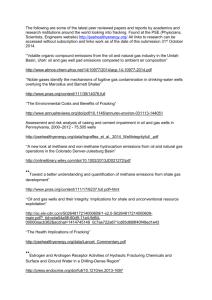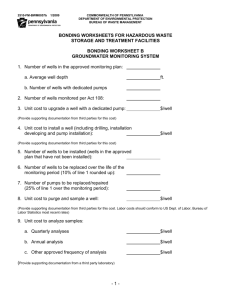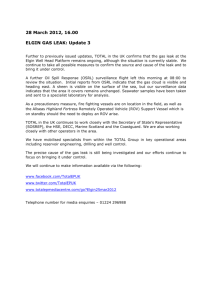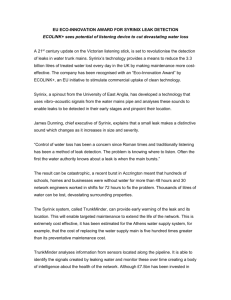Phil`s presentation final version
advertisement
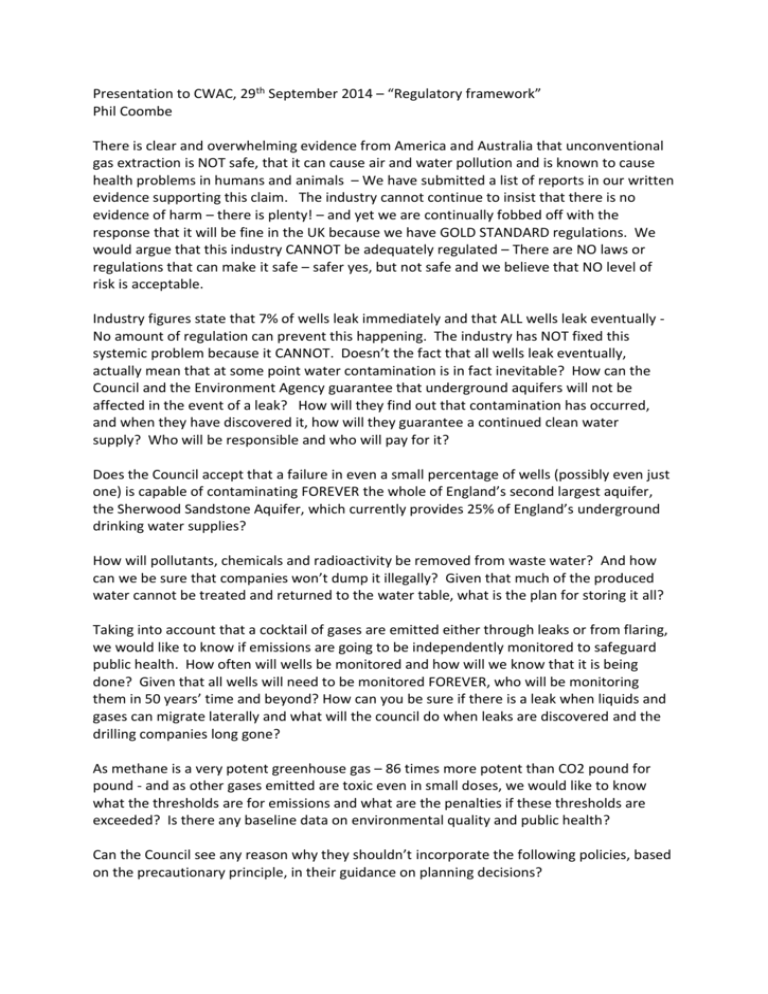
Presentation to CWAC, 29th September 2014 – “Regulatory framework” Phil Coombe There is clear and overwhelming evidence from America and Australia that unconventional gas extraction is NOT safe, that it can cause air and water pollution and is known to cause health problems in humans and animals – We have submitted a list of reports in our written evidence supporting this claim. The industry cannot continue to insist that there is no evidence of harm – there is plenty! – and yet we are continually fobbed off with the response that it will be fine in the UK because we have GOLD STANDARD regulations. We would argue that this industry CANNOT be adequately regulated – There are NO laws or regulations that can make it safe – safer yes, but not safe and we believe that NO level of risk is acceptable. Industry figures state that 7% of wells leak immediately and that ALL wells leak eventually No amount of regulation can prevent this happening. The industry has NOT fixed this systemic problem because it CANNOT. Doesn’t the fact that all wells leak eventually, actually mean that at some point water contamination is in fact inevitable? How can the Council and the Environment Agency guarantee that underground aquifers will not be affected in the event of a leak? How will they find out that contamination has occurred, and when they have discovered it, how will they guarantee a continued clean water supply? Who will be responsible and who will pay for it? Does the Council accept that a failure in even a small percentage of wells (possibly even just one) is capable of contaminating FOREVER the whole of England’s second largest aquifer, the Sherwood Sandstone Aquifer, which currently provides 25% of England’s underground drinking water supplies? How will pollutants, chemicals and radioactivity be removed from waste water? And how can we be sure that companies won’t dump it illegally? Given that much of the produced water cannot be treated and returned to the water table, what is the plan for storing it all? Taking into account that a cocktail of gases are emitted either through leaks or from flaring, we would like to know if emissions are going to be independently monitored to safeguard public health. How often will wells be monitored and how will we know that it is being done? Given that all wells will need to be monitored FOREVER, who will be monitoring them in 50 years’ time and beyond? How can you be sure if there is a leak when liquids and gases can migrate laterally and what will the council do when leaks are discovered and the drilling companies long gone? As methane is a very potent greenhouse gas – 86 times more potent than CO2 pound for pound - and as other gases emitted are toxic even in small doses, we would like to know what the thresholds are for emissions and what are the penalties if these thresholds are exceeded? Is there any baseline data on environmental quality and public health? Can the Council see any reason why they shouldn’t incorporate the following policies, based on the precautionary principle, in their guidance on planning decisions? Policy 1 – An applicant for planning permission for CBM or shale gas operations (including test drilling and extraction) must demonstrate by appropriate evidence and assessment, that there is NO reasonable scientific doubt of adverse impacts on water resources, air quality, local communities, seismic activity or greenhouse gas emissions and climate change. Policy 2 – Planning permission will not be granted unless a) the council is satisfied that all reasonable scientific doubt of any risk of adverse impact has been eliminated; b) the proposal will not compromise the Council’s duties in relation to climate change mitigation and c) the proposal is environmentally acceptable.




